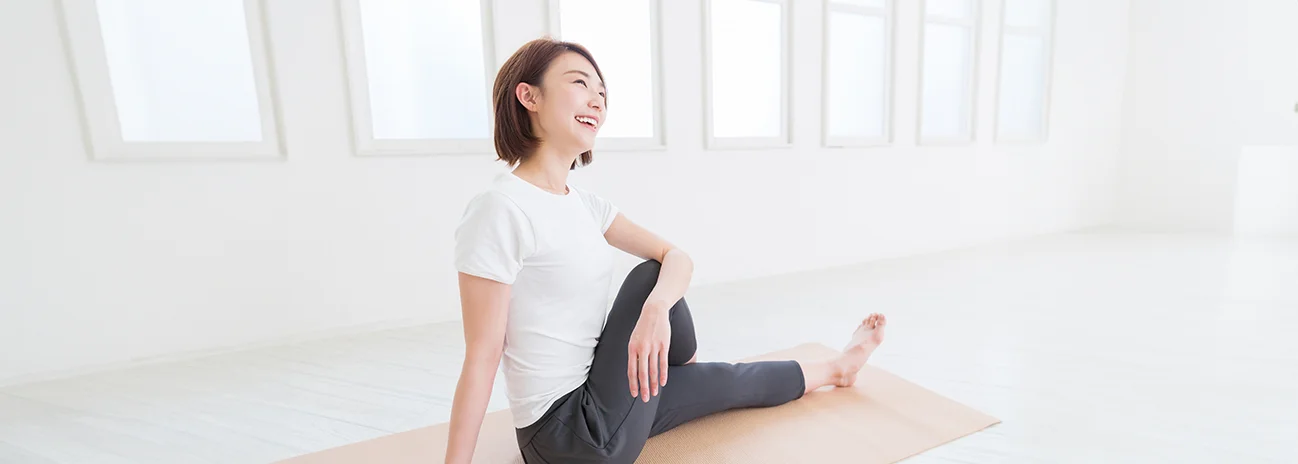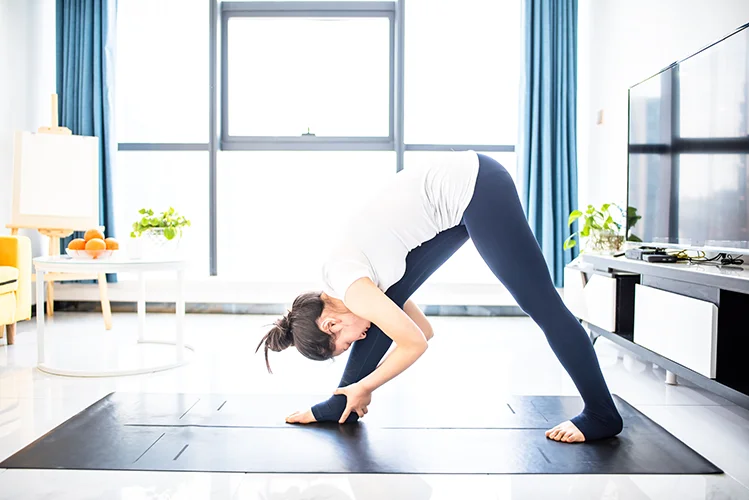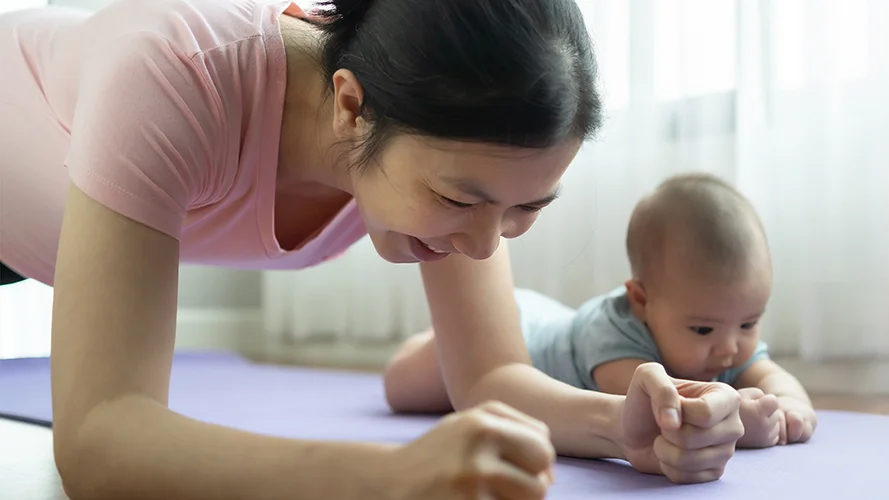Topics
The pelvic floor, a complex network of muscles, ligaments, and tissues, plays a crucial role in a woman's overall health and well-being. From supporting vital organs to enhancing sexual function, these muscles are integral yet often overlooked.
A woman’s life stages, such as pregnancy, childbirth, and ageing can weaken the pelvic floor resulting in conditions like pelvic organ prolapse and incontinence. Therefore, targeted exercises are essential to maintain strength and control and to prevent pelvic floor dysfunction.
To keep your pelvic floor muscles strong or rebuild them, it is recommended to include certain exercises in your workout regimen. Let us learn more about them.
Function of Pelvic Floor
The pelvic floor, or the pelvic diaphragm, is a dome-shaped muscular sheet separating the pelvic cavity (above) from the perineal region (below). This cavity houses the pelvic viscera – uterus (in females), intestines, and bladder.
The pelvic floor is critical for the following functions:
- Stability and strength for the spine.
- Improved sexual experience.
- Support for internal organs such as the vagina, urethra, uterus, rectum bowel (large intestines) and anus.
- Enhances the circulation of the lymphatic fluid moving from one’s legs to the heart and back.
- Improves sphincter muscles for the urethra, vagina, and anus that function to regulate the flow of urine, faeces, and bile.
One of the easiest ways to identify your pelvic muscles is by stopping urine flow for a second or two. Another way to locate the pelvic floor muscles more precisely is via the following steps:
- Relax your thighs, stomach, and buttock muscles.
- Squeeze in the muscles around the urethra as if stopping the urine flow.
- Squeeze the muscles around the vagina and pull them upwards (inside the pelvis).
- Tighten the muscles around the anus as if trying to stop the wind without clenching the thigh, stomach, and buttock muscles.
- The muscles around the anus and urethra should tighten up and inside the pelvis.
- Take note of the muscles contracting when you practice these steps. These are the pelvic floor muscles.
Common Signs of Pelvic Floor Weakness
Some factors that influence pelvic muscle floor strength for women include pregnancy, childbirth, and aging. Other factors include chronic cough and constipation for more than three months.
The following are common signs of a weak pelvic floor:
- Losing bladder control or incontinence. This can be seen through leaking urine when sneezing, exercising, or laughing.
- Faecal incontinence that causes stool to leave the body involuntarily.
- Pelvic organ prolapse – prolapse of the bladder, rectum, and uterus.
- Vaginal flatulence (queefing) during yoga or stretching could mean your muscles are getting weaker, trapping more air inside.
- A frequent urge to urinate.
- Vaginal dryness resulting in painful sex.
- Tampons are falling out or dislodging.
- Recurrent thrush or frequent urinary tract infections.
Benefits of Pelvic Floor Exercises for Women
Pelvic floor exercises are targeted exercises designed to strengthen the muscles of the pelvic floor. Studies have shown that pelvic floor exercises like Kegel can be used to increase inter-abdominal pressure while laughing or coughing to avoid leakage. Other benefits you can get from these exercises include:
- Preventing pelvic floor prolapse.
- Treating urinary incontinence.
- Strengthening the support of a baby during pregnancy.
- Passing urine and faeces is comfortable and easier.
- Making childbirth easier and significantly reducing the chances of incontinence afterwards.
- Improving pleasure during sex by reducing pain previously caused by vaginal dryness or tight pelvic floor muscles.
5 Pelvic Floor Exercises
1. Pelvic Floor Muscle Training (PFMT)
Also known as Kegels, this exercise among the easiest pelvic floor exercises for women. You can do them anywhere, and they give the desired results.
Follow these easy steps for effective Kegel exercises:
- Locate your pelvic floor muscles as described earlier on in this article.
- Then, tighten them for 3 seconds and relax them for 3 seconds. That is one Kegel.
- Repeat step ii ten times – that is one set.
- Do one set in the morning and another set in the evening.
- Add the number of reps or increase the duration of each Kegel as you gain strength. For example, you can hold and relax your pelvic floor muscles for 10 seconds or do 15 sets.
2. Squats
Squats are another effective way to repair and strengthen the pelvic floor muscles. Follow these steps for the best results:
- Stand with your feet hip-width apart, and ensure they stay on the floor.
- Bend your knees and ensure they are in line with the toes. Only go as low as you can comfortably and ensure your back stays straight.
- Return to your standing position and focus on tightening the pelvic floor and buttocks.
- Repeat the exercise six times and take a break before doing another set.
3. Glute bridge
Although the glute bridge is popularly known for strengthening the buttock, it can also help strengthen the pelvic floor muscles. Here are the steps to follow:
- Lie on your back and knees bent. Your feet should be on the floor and hip-width apart. Place your arms palms down by the sides.
- Contract the pelvic muscles and buttocks and lift the buttocks a few inches off the ground.
- Hold this position for 3-9 seconds.
- Relax the buttocks and pelvic floor muscles and lower the buttocks back to the ground.
- Repeat the exercise ten times and do two more sets.
4. Runner’s lunge
The runner's lunge stretches the hip flexors, hips, and legs, and it is good for the pelvic floor. Here is how to do it right:
- Step forward with one foot and stack the knee over the ankle.
- Frame your front foot with your two hands (if your hands do not easily reach the ground, support them using two yoga blocks or books).
- Allow the hips to shift forward to open up the front of your back leg's thigh.
- Ensure the front knee is directly over the ankle.
- Hold this position and do 12-15 deep breaths.
5. Bird dog
The bird dog works out your core which includes the pelvic floor. Here is how to do it right:
- Get into a tabletop position and ensure the shoulders are directly over the wrists and the hips are aligned with the knees.
- Engage the abs and pelvic muscles, extend the right arm forward, and lift the left leg behind you while flexing the left foot.
- To deepen the stretch, imagine you are pushing the heel against the wall and reaching the hand forward.
- Hold 3-5 breaths before bringing your leg and hand back down.
- Alternate the sides for eight reps.
Exercises to Avoid If You Have a Weak
When dealing with a weak pelvic floor, certain exercises can exacerbate the problem and should be avoided or modified. These include gymnastics, high-impact exercises like skipping, running, jumping or aerobics, some yoga and Pilates poses that can strain the pelvic floor muscles, heavyweight lighting, and intense core exercises like crunches.
Remember to consult with a healthcare provider or a fitness professional specializing in pelvic health to determine the appropriate exercises for an individual's specific condition. They can provide guidance on safe alternatives and modifications to support and strengthen the pelvic floor without causing harm.
Make an Appointment at Gleneagles Hospitals
Whether you are a new mother looking to regain muscle tone or someone seeking to improve bladder control, these exercises, are tailored to meet the unique needs of the female body.
We hope that this comprehensive guide empowers you with the knowledge and techniques to take control of your pelvic health. However, before you commit to any pelvic floor exercises, please consult your doctor to ensure they are safe.
Schedule an appointment today with the team of Obstetrics and Gynaecology specialists or physiotherapists at your nearest Gleneagles Hospital if you have questions about pelvic floor exercises.









